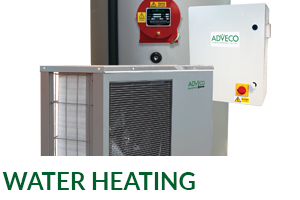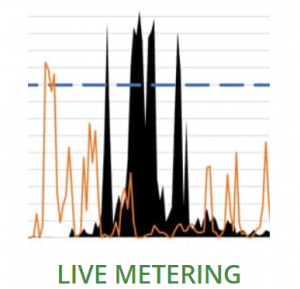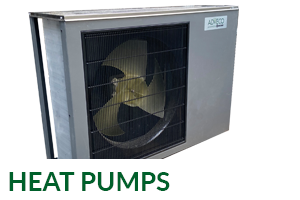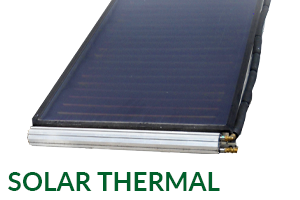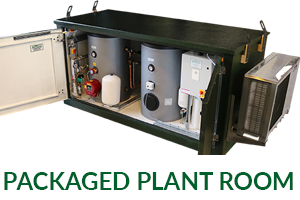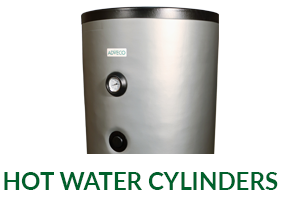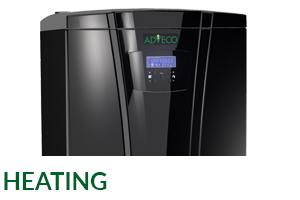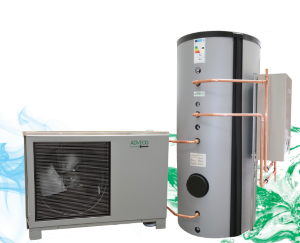ADVECO LTD
Suppliers of: Gas Boilers, Air Source Heat Pumps, Packaged Plant Rooms, Renewable Heating, Commercial Heating Systems, Solar Thermal Heating, Heat Recovery, Water Heating
Adveco – The Hot Water Specialists - Bespoke & Packaged Domestic Hot Water Systems for Commercial Projects
Adveco Ltd. is the trusted specialist provider of bespoke, low-carbon hot water and heating systems to the building services industry. Adveco is the single source for system design, supply, commissioning and warranty service. Our services include onsite metering, engineer assessment, and theoretical modelling. Adveco also provides a wide range of options for electric and gas water heating, incorporating the latest heat pumps, solar thermal, electric boilers, cylinders, gas water heaters and boilers, and heat recovery technologies. From individual appliances to full systems that can be packaged or even built off-site and delivered ready for installation, Adveco is able to support projects with bespoke offerings that ensure optimal and cost-effective operation and a route to reducing carbon emissions from your buildings.
BIM & CAD Files available: Click here
Our sectors include:
- Education
- Healthcare
- Hotels
- Leisure
- Offices
- Public Sector
- Restaurants & bars
Our Product Ranges:
Water Heating - Commercial Hot Water Systems:
Data gathering, sizing and bespoke system recommendation for commercial properties intending to replace legacy gas systems.
A range of ASHP’s with above average seasonal coefficient of performance (SCOP), for DHW system pre-heat
- FPi-32 Air Source Heat Pumps
- L70 Air Source Heat Pump
- FUSION Packaged Electric Water Heating System
Compact, efficient systems for carbon reduction in commercial buildings which use large amounts of daily hot water, whether on gas or electric.
- Solar Collectors
- Solar Thermal Drainback
- SGE Water Heater with Integrated Solar
A wide selection of highly efficient condensing gas water heaters. Choose from glass-lined or stainless steel vessels with a range of tank sizes to meet project demands.
- AD Water Heaters
- AD Plus Instantaneous Water Heaters
- BFC Cyclone Water Heater
- Innovo Water Heater
- SGE Water Heater
- Twister II Water Heater
For the widest selection of commercial-grade hot water cylinders with indirect-fired water heaters, calorifiers and buffers for various DHW applications requiring large volume storage of water at high temperatures.
- SSB, SSI, SST Stainless Steel Hot Water Tanks
- ATSx Stainless Steel Hot Water Tanks
- GL Hot water Cylinders
- MSS Premium Steel Buffers
- IT Indirect Tanks
- ITS Twin Coil Indirect Tanks
- ST Storage Tanks
A range of electric boilers and water heaters designed to cut carbon emissions in line with net zero strategies and drive greater efficiency and longevity optimising capital investments.
- ARDENT Floor-Standing & Wall-Mounted Electric Boilers
- FUSION Packaged Electric & Packaged Renewable Water Heaters
- SSB-E Stainless Steel Electric Water Heaters
- DRE Electric Water Heaters
- EES Electric Water Heaters
A range of electric immersion heaters and kits for use with water heating systems. Ideally suited as backup heat sources in a wide variety of applications, they are an excellent choice for low carbon top up heating when paired with renewables.
- EB Series
- E Series
The HR001, is a standalone Heat Recovery Unit providing a convenient, packaged unit to recover refrigerant system waste heat. Perfect for commercial organisations that make use of large chiller or refrigeration technology as part of their day to day operations, such as restaurants and large-scale catering facilities in hotels, schools or universities and retailers holding frozen stock.
Creating a modern, efficient, cost-effective, and sustainable hot water & heating system is not just advantageous, it is increasingly becoming a demand as the United Kingdom transitions towards a more environmentally friendly Net-Zero nation by 2050.
- Low Carbon Packaged e32-Hot Water System
- MD Floor Standing Boilers
- MD Wall Hung Boilers
- MSB Standard Steel Heating Buffers
- Chilled Water Tanks
Adveco Ltd. employ an experienced team of industry professionals to provide first class services including technical support. An in-house technical department is available to provide specialist technical information and support for any query.
Further technical information is valiable through the Manufacturer’s own website or from the BPi Download Library
Adveco Reimagines Lower Carbon FUSION Water Heating
 Commercial hot water specialist Adveco reimagines its award-winning lower carbon FUSION packaged electric water heater system with new models that take advantage of the more powerful ADV-W air source heat pump (ASHP), enhanced controls, and a greater choice of backup immersion heaters. For commercial organisations with sink-led hot water demands, taller buildings with basement plant rooms or operations that rely on 24/7 hot water supply Adveco FUSION TW provides the most comprehensive response available today.
Commercial hot water specialist Adveco reimagines its award-winning lower carbon FUSION packaged electric water heater system with new models that take advantage of the more powerful ADV-W air source heat pump (ASHP), enhanced controls, and a greater choice of backup immersion heaters. For commercial organisations with sink-led hot water demands, taller buildings with basement plant rooms or operations that rely on 24/7 hot water supply Adveco FUSION TW provides the most comprehensive response available today.
The all-new FUSION-TW and TWplus packages take the existing sealed primary loop combination of ARDENT electric boiler and ATST twin-coil cylinder and now add a range of monobloc ASHP alternatives with the new FUSION Control Box for greater carbon reduction and increased system output for more demanding hot water applications.
FUSION-TW and TW-Plus gain a wider choice of compact, pre-charged R32 ASHPs, which are easy and safer to install, especially when space is limited, and operate quietly. System preheat is generated by either a 10 – 16 kW single-phase ADVS-W ASHP or a 16-30 kW ADV-W in three-phase capacity. With an A+++ ERP energy rating, and high SCOP with water outlet temperature 60° the ADV-W will maintain a consistent supply of hot water at up to 55° to pre-heat the FUSION system.
The TW-plus plus variants include either a 6 or 12 kW electric backup immersion for no single point of failure for assured delivery of hot water without downtime.
Balancing these system elements is a critical function of the design, and smart controls ensure contribution from the ASHP is maximised to deliver a working flow of 50-55°C at an ambient operating temperature of 2°C, setting a realistic benchmark for operating conditions in the UK. FUSION’s new enhanced controls not only optimise the mixture of pre-heat from the heat pump, but they also manage the elements within the electric boiler and backup immersion. This ensures the electric boiler is not required to work as hard to raise flow temperatures to the 65°C demanded by commercial applications, reducing maintenance demands and improving the longevity of the boiler.
Adveco has released new single- and three-phase control panels supporting both ADVS-W and ADV-W variant ASHP. Time control clock controls are built-in, as is thermal disinfection. When connected to the BMS, disinfection and high-temperature pasteurisation functions can also be monitored when active, and a fault relay can be instigated. The new panels support connections for the LLH pump, lighting, socket, heater bar, secondary return pump and destratification pump output. With the inclusion of a GSM module, fault notifications can be enabled from the BMS or via text. The new controls also provide the option to prevent immersion activation when ASHP goes into fault to limit current.
With storage capacities ranging from 300 to 750 litres provided by the corrosion-resistant, stainless steel, high-pressure indirect cylinder, nominal power output ranges from 19 kW to 52 kW in FUSION-TW.
FUSION TW variants will support instantaneous draw off from 130 to 315 litres/hour and continuous flow rates starting at 323 litres and climbing to 883 litres per hour. With the ASHP able to contribute up to 70% of system heat, FUSION systems will offset some of the direct electric energy demands, meaning it can help control daily energy costs as well as extend the life of the electric boiler. Carbon emissions compared to electric-only systems are cut by as much as 48% and up to 68% when compared to gas-fired equivalents.
Greg Brushett, sales director, Adveco, says: “FUSION continues to change the way low-carbon water heating can be specified in commercial buildings. It allows for highly optimised applications which can be provided off-the-shelf in pre-sized, ready-to-go systems with a smaller footprint, that are easier to install, more efficient and cost-effective to purchase and operate.”
FUSION provides assured operation, fully countering limescale in hard water areas, whilst tough enough to prevent the corrosive action of soft water. And with new system enhancements, support for single and three-phase specifications, plus greater power output for even larger projects, lower carbon FUSION offers the means to realistically meet net zero strategies today. Adveco is also able to support bespoke commercial projects applying FUSION’s hybrid system approach for more complex and demanding application designs.
Key features
FUSION TW
High-quality ATST twin coil stainless steel vessel with mounting points & brackets
Available in 300 – 750 litre capacities
Cylinder pressure 10 bar as standard
9, 12 or 24 kW electric boiler
10, 12 or 16 kW single-phase air source heat pump
16, 22 & 30 kW three-phase air source heat pump
Pre-built pipework (left or right)
FUSION Control Box
Compact space-saving form factor
25 pre-sized variants from 19 to 52 kW
FUSION TWplus
6 kW or 12 kW electric immersion
FUSION Control Box & GSM remote alerts
25 pre-sized variants from 19 to 52 kW
Designing DHW To Overcome The Hurdles To More Sustainable Buildings
 Summary
Summary
Designing DHW. Adveco highlights existing and new hurdles impeding sustainability strategies which target water heating, a business-critical service with potentially high energy demands and one of the notable contributors to carbon emissions from the non-domestic built environment…
Adveco highlights existing and new hurdles impeding sustainability strategies which target water heating, a business-critical service with potentially high energy demands and one of the notable contributors to carbon emissions from the non-domestic built environment. We start with designing DHW…
Designing a successful domestic hot water (DHW) system for a commercial building today necessitates a holistic understanding of system design. One which demands a nuanced approach, carefully balancing adherence to stringent building legislation, paramount safety considerations, economic viability, and the growing imperative of environmental sustainability.
One of the foundational approaches lies in a thorough understanding and implementation of the UK Building Regulations, specifically Part G (Sanitation, hot water safety and water efficiency) and Part L (Conservation of fuel and power). Part G sets clear guidelines on the provision of hot water at safe temperatures to prevent scalding, mandates measures to limit water wastage, and specifies requirements for the design and installation of hot water systems. Part L focuses on energy efficiency, requiring systems to be designed to minimise heat losses (through effective insulation of pipes and storage vessels), efficient heat generation, and appropriate controls. Compliance with these regulations is not merely a legal obligation but a crucial step towards ensuring safety and energy efficiency.
Safety remains a non-negotiable aspect of hot water system optimisation. Beyond regulatory compliance, a proactive approach to safety involves meticulous risk assessments during the design and installation phases. This includes identifying potential hazards such as legionella growth, which thrives in stagnant warm water. Implementing strategies like maintaining hot water storage temperatures above 60°C, ensuring regular flushing of the system, and preventative design of pipework to avoid dead legs. Furthermore, regular maintenance and inspection schedules are essential to identify and rectify any potential safety issues before they escalate.
Cost optimisation requires a comprehensive lifecycle perspective, encompassing initial capital expenditure, ongoing operational costs (primarily energy), and maintenance expenses. While the allure of lower upfront costs might be tempting, a more strategic approach considers the long-term energy consumption and potential for savings through efficient technologies. Investing in high-efficiency boilers or heat pumps, properly sized storage tanks to minimise reheating losses, and sophisticated control systems can significantly reduce energy bills over the system’s lifespan. That said, good design will also help significantly lower capital investment, as it helps avoid system oversizing, which inherently leads to excess investment in unnecessary or duplicated appliances. Furthermore, designing for durability, especially when considering local water quality (hard or soft), can minimise long-term maintenance, repair and replacement costs. Recognising the total cost of ownership is therefore crucial for making informed decisions.
Finally, there is sustainability, which involves minimising the system’s environmental footprint through reduced energy consumption and the adoption of renewable energy sources. Heat pumps, for example, offer a significantly lower carbon footprint compared to traditional fossil fuel boilers, but are best deployed extracting heat from the air to preheat a hot water system. Solar thermal systems, a true and well-proven renewable, can directly harness solar energy to preheat or fully heat water, further reducing reliance on conventional energy sources. Integrating smart controls and monitoring systems can further optimise energy usage by adjusting heating schedules based on occupancy and demand, preventing unnecessary energy waste.
As a result, sustainability has not only emerged as a key driver in the optimisation of commercial hot water systems, but has started to supersede both cost optimisation and, of some concern, safety. This is notably the case with the latest generation of high-temperature heat pumps dependent upon poorly regulated propane-based R290 refrigerants, and electrical systems, such as photovoltaics (PV), which have a known potential for causing electrical fires on rooftops. Both technologies are fêted by the government as critical to the roll-out of sustainability strategies, but, in the wake of the Grenfell Enquiry, are increasingly problematic in their current iterations.
With an unprecedented acceleration in technology, many are now racing to keep up with innovation in this field, further compounding errors typically arising from poor design or installation.
Gas to Electric – Recognising Common Errors
Without a doubt, one of the great challenges that faces the UK is the retrofit of HVAC systems across the commercial built environment. According to the Department for Business, Energy, & Industry Strategy (BEIS), there were 1,755,000 recognised non-domestic buildings in England and Wales at the end of March 2024. The UK Green Building Council (UKGBC) estimates that 80% of these buildings will still be here in 2050, meaning the large majority, which still rely on gas water heating, will require retrofit over the next 25 years if improved performance for sustainable operation is to be achieved. Transitioning commercial water heating from gas to electric presents unique design challenges, and several common errors can arise if these differences aren’t carefully considered.
To enable change requires accurate load assessment. Underestimation leads to an insufficient hot water supply during peak times, causing user dissatisfaction. Conversely, overestimation results in oversized systems with higher capital costs and increased energy losses due to heating and storing excessive water. Accurate load calculations, considering occupancy patterns and usage habits, are crucial for optimal system sizing and can be easily secured by monitoring live flow through the system via low-cost, non-invasive water metering. The latest generation of water heaters may even incorporate water metering as a feature.
Without credible data, one frequent mistake is to plan for a direct capacity swap without accounting for energy characteristics. Simply replacing a gas boiler with an electric heater of the same kilowatt rating can lead to undersized systems. Electric heating elements, or systems using heat pumps for low-carbon preheat, will have a slower recovery rate compared to gas-based systems, meaning they take longer to reheat water. A design must factor in this slower recovery and increase the storage volume or the kW rating of the electric heater to meet peak demands.
Another pitfall of transitioning from gas to electric is neglecting the electrical infrastructure. Existing commercial buildings might have sufficient gas supply but lack the necessary electrical capacity for a high-demand electric water heating system. The resultant upgrades to the building’s electrical supply are not only extremely costly, but can also seriously impact project timeframes, either of which can stall or lead to cancellation of sustainability projects. A thorough assessment of the existing electrical infrastructure and DHW demands can help deliver systems that require less electrical capacity, accelerating project timeframes as well as reducing capital investment and ongoing operational costs, which are another major consideration.
While electric systems eliminate gas usage for greater carbon savings, electricity costs per unit of energy are much higher, by a factor of four at the time of writing. This is not simply a case of choosing better value electricity tariffs; it also requires balancing a DHW application design to optimise running costs. This is best achieved by taking advantage of low-carbon technology, such as heat pumps and solar thermal, to preheat water and offset the demands of the more expensive primary electrical heating. Failing to design the system to effectively utilise self-generated heat during daylight hours is a key missed opportunity. Electric water heating is an ideal partner for on-site renewable energy generation, of which solar thermal is by far the most efficient, proven and safe option, offsetting at least 30% of annual electrical demand throughout the UK. With smart controls and appropriately sized storage, applications can maximise the benefits of renewable and low-carbon integration.
An integrated perspective for future water heating
A holistic approach to optimising DHW integrates legislation, safety, cost, and sustainability throughout the entire lifecycle of the hot water system, from initial design to ongoing operation and maintenance. This requires a thorough understanding of building regulations, load assessment, appropriate component selection, optimised system layout, robust safety measures, and consideration for future needs and maintenance. Engaging experienced and qualified professionals is crucial to ensure a commercial hot water system is safe, efficient, cost-effective, and compliant, especially when transitioning from existing gas to electric hot water provision.
Commercial building operators that embrace an integrated perspective that considers the interconnectedness of these critical factors will advance building sustainability faster, while prioritising safety and minimising costs now and in the future.






